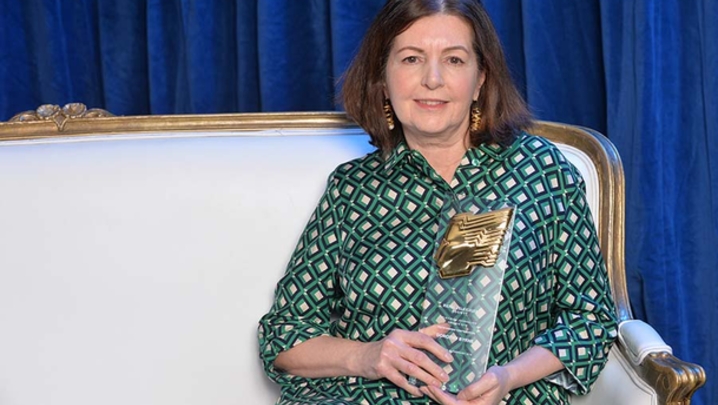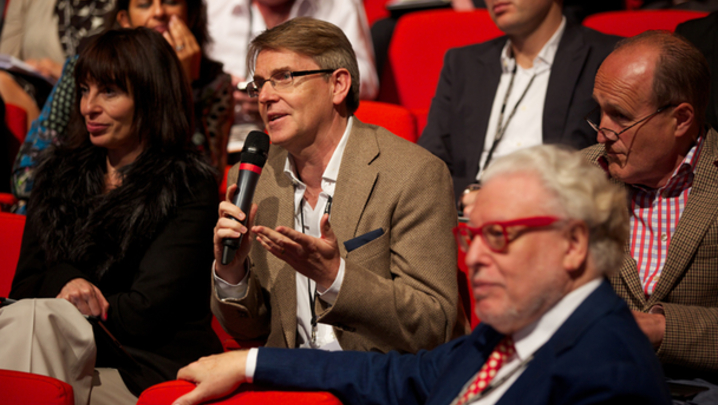Launched one year ago, the upstart news network is winning new respect for Vice Media hears Pippa Shawley
When Vice News launched online, in March 2014, it had a lot to prove. Coming from the same stable that had published articles such as "It's time to talk about armpit fetishes" and "Santa was a shroom head", there was a risk that the hipster bible would struggle to make a credible entrance into the field of news reporting.
One year on and Vice is hailing its news channel as a success and established broadcasters have been forced to sit up and take notice.
"A lot of the received wisdom, particularly from television news and current affairs, was that young people didn't like news and current affairs.
"Well, actually, what we realised and, I think, have proved, is that there's a massive thirst for how the world is seen from people aged 16 to 35," says Kevin Sutcliffe, Head of News Programmes for Europe at Vice News.
With just 59% of 16- to 24-year-olds tuning in to TV news programmes, according to Ofcom's News Consumption in the UK: 2014 Report, Vice News already boasts an impressive 1.1 million subscribers to its YouTube channel.
The key to winning over millennial viewers, says Sutcliffe, who edited Channel 4's Dispatches before joining Vice, is to recognise that viewers want to pick and choose what news they watch, and how and where they watch it.
Vice News's video output varies from three-minute Beyond the Headlines daily news summaries to long-form documentaries on big issues.
Last year, Vice attracted international headlines for The Islamic State series, in which film-maker Medyan Dairieh gained exclusive access to the self-proclaimed caliphate in Syria.
Dairieh spent three weeks with Islamic State fighters, reporting from an area that had been virtually abandoned by the mainstream press following highly publicised murders of foreign journalists. The footage was so compelling that it was used by Newsnight, the Australian Broadcasting Corporation's 7:30 news programme and All in with Chris Hayes on MSNBC.
The Islamic State, alongside other videos looking at the conflict in Ukraine, the Peruvian cocaine trade and the civil unrest in Ferguson, Missouri, has helped Vice News quickly establish a reputation in foreign news reporting.
Richard Sambrook, Director of the Centre for Journalism at Cardiff University, believes that this head-on approach is what makes Vice News so popular among millennials: "Part of its brand is that it is edgy and young and a bit punkish and gonzo.
"Actually, Kevin Sutcliffe is a very experienced TV executive producer, so, behind the scenes, I think it is a lot more traditional and professional than it appears to be."
Dorothy Byrne, Head of News and Current Affairs at Channel 4, agrees that Vice News content is, in reality, fairly traditional. She likens Vice News reports to the kind of programmes Channel 4 was making 15 years ago.
"Unreported World, in the past, used to be more like Vice is now, with a young, often white, male in a war zone, rushing around. It was all quite macho and often exciting, and it's interesting that we've moved on from that," says Byrne.
Vice has shown how old-fashioned a lot of the traditional formats have become
With Vice News and Channel 4 both targeting millennial audiences, it would be easy to see this as a dig at Byrne's former colleague Sutcliffe.
Both claim, however, that their editorial decisions are not influenced by demographics. "What's liberating for us is that [audience demographics] are none of our concern," says Sutcliffe.
He acknowledges that Vice shares some characteristics with his former broadcaster: "The parallels with Channel 4 are, I think, that we draw broadly from the same set of sensibilities about just making good journalism and good films and good content."
Byrne agrees: "Our experience is that if you try and target young people on TV, you lose all your older viewers, and young people go, 'Oh God!'. I don't think it's about being young or old; it's about your attitude."
Vice News claims to be the fastest-growing channel on YouTube, and recently featured in a major advertising campaign by the video host, alongside vloggers Zoella and The Slow Mo Guys.
Its videos have received more than 190 million views since March 2014, indicating that Vice's storytelling is clearly chiming with a large audience worldwide.
"The way it tells its stories is far more immersive and feels more authentic than the traditional TV format," says Sambrook. "That's given the main TV industry something to think hard about. I believe it has shown up how old-fashioned or stuck in a rut a lot of the traditional formats have become."
Whether Vice News is responsible for involving a younger generation of viewers in current affairs, or has simply attracted those who were already consuming this material, remains to be seen.
"I think [it's] important that we're able to say something that we think hasn't been said or shown."
Byrne says that Channel 4 has noticed a significant increase in the number of younger viewers engaging with its current-affairs output. She notes that "in the period of a year, we've had a 20% increase in the youth share for Unreported World, which is extraordinary."
Byrne cites Patrick Speaks, a four-minute clip about a profoundly deaf Ugandan teenager learning sign language, which has received more than 1.5 million views on YouTube alone, as one reason for this change in audience profile.
The other reason, she says, is the way in which the programme is made: "We foreground people from those countries in Unreported World, and particularly people from those countries doing something to help their own communities, rather than following the reporter. This is where I think we're different to Vice."
The 2015 general election will be a major test for programme makers who hope to appeal to the under-35s (see Social media sets the political agenda).
With the think tank Demos suggesting that young voters could swing the vote this year, the question of how to make election coverage that is appealing to them is troubling broadcasters.
The rules around broadcasting during the election period lead to a certain kind of programming, argues Sutcliffe at Vice. "I think [it's] important that we're able to say something that we think hasn't been said or shown."
Meanwhile, Byrne says that Channel 4 is planning to launch a new online product in the next few months to specifically target young people.
"Essentially, what we've realised is that you have to reach out to them. In the past, we would have said, 'We've got great material, come and watch it on Channel 4'. Our new strategy is: 'We've got great material and we think it's so good we're taking it out online to you. We're taking it to where you are'."
Although Vice News is still in the planning stages of its election coverage, its new series Europe or Die focuses on migration in Europe – a key political issue across the continent, not least in the run-up to the British general election.
The 2015 general election will be a major test for programme makers
"We think it's one of the biggest stories of the early part of this century, and it won't go away," says Sutcliffe. "We've really put some effort into understanding migration routes and Europe's response to migrants. It's become critical."
The flexibility of producing content for an online audience means that Sutcliffe and his colleagues can be more creative with their programming.
However, Vice plans to launch a 24-hour linear channel in Canada later this year. On top of that, Vice founder Shane Smith previously announced that a Vice channel would be available in 18 countries. So, Vice may find itself struggling with the scheduling challenges of more traditional broadcasters.
"When it has got a schedule to fill day-in, day-out, the quantity of content has got to increase exponentially. Therefore, you've got to wonder whether it can continue to produce the same quality in that quantity," worries Sambrook.
Sutcliffe isn't fazed by talk of linear channels: "It's Vice content, and that's what is important...
"We're happily growing Vice News at the moment and, if people want to come and talk to us [about broadcasting content on television], that would be great."





